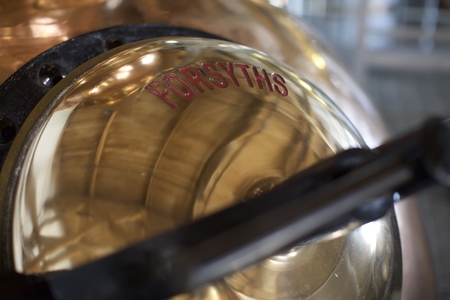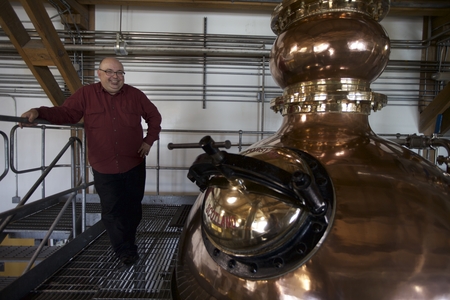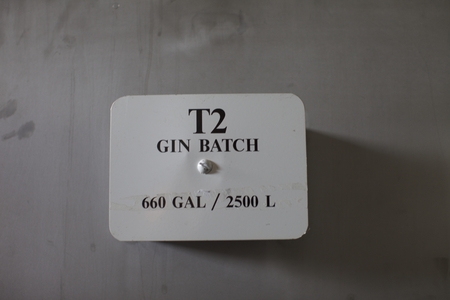
More about Distillery No. 209
Established: 2005
Owner: Rudd Family
Capacity: Not supplied
Visitor Policy: Δεν δέχεται εύκολα κοινό
Tel: +1 415-369-0209
Website: http://www.209gin.com
Address
San Francisco
California
United States
Production of No. 209 Gin starts with 95% alc./vol. quadruple column-distilled corn neutral spirit sourced from a specialist rectifier in America’s Midwest. Corn was chosen due to its faint natural sweetness and 500 gallons of this spirit are used to charge the still for each distillation.

Named Rosie due to her light rose gold colour, 209’s steam jacket heated copper pot still was made by the renowned Scottish whisky still makers, Forsyths and its shape mimics that of a Glenmorangie still. Hand-beaten from 1/8 inch thick copper its unusually tall neck and boil ball make it difficult for spirit vapours to rise up the column causing heavy vapours to fall back down into the still before making it over the lyne arm. Known as reflux this helps eliminate unwanted oily notes from the final distillate.

A secret formulation of around 25 pounds of botanicals is macerated with the corn neutral spirit in the still overnight for a maximum of 16 hours. Arne, 209’s Master Distiller, has found that the pith on the citrus peel is detrimental to flavour if steeped for longer than this.

Prior to distillation, just short of 500 gallons of purified water is pumped into the still to reduce the strength of the spirit to around 50% alc./vol.. Municipal water is used and fortunately the quality of San Francisco’s water which comes from Hetch Hetchy reservoir in the Yosemite National Park is very good. However, a filtration system is used to remove chlorine, other chemicals and trace metals from the water.

They usually start the on-demand steam generator to commence distillation around 7:30 in the morning and it takes around 45 minutes to heat the still to the temperature where distillation begins (above 78°C) and distillate starts to emerge from the condenser. The first 20 to 25 gallons are discarded as heads. This is not so much due to unwanted vapours emerging from distillation but more to flush out the still’s neck, lyne arm and condenser from the last distillation. The switch from heads to heart spirit starts around 9am and continues until around 5:30pm. A relatively small proportion (around 65%) of the heart of distillate is then collected before switching to tails. This cut point is judged through a combination of experience, tasting every half-an-hour or so, and the use of an alcohol strength meter.

The heads and tails are sent for processing into bio car fuel. Arne says that the distillery being sat over the bay makes his life easier as the temperature in the building remains around a constant 13°C (55°F) all year round so making cut points during distillation more consistent.

The average strength of the heart distillate collected from each distillation is around 77% alc./vol. and this is diluted back to the 46% alc./vol. gin’s bottling strength with the same purified water used to charge the still. Each distillation lasts nearly 11 hours, producing 3,600 litres (950 gallons) of finished gin with present demand of No. 209 Gin calling for around three distillations per month.

It should be noted that No. 209 Gin is a one-shot gin, meaning that only water is blended with the spirit after distillation. Conversely, many other gin distillers and almost all major brands of gin are made using multi-shot distillation where an increased proportion of botanicals is used and the concentrated distillate produced is then stretched out by blending with a combination of neutral spirit and water. Multi-shot distillation saves still time and energy but does not suit the artisanal nature of No. 209 Gin or Arne’s unhurried methodical way of working.
Botanicals
I’ve visited Distillery No. 209 on a number of occasions over the years and each time I am taken by the loving care applied to the preparation of the botanicals used to make No. 209 Gin. No matter how much you question Arne he is very tight lipped as to the exact number of botanicals used (8 to 11) and what all those botanicals are. However, it is the processes applied to those that are disclosed which continues to impress me.

Enter the wonderfully fragrant small shipping container which acts as a humidity controlled store and sits in the shadow of the large still and you’ll see various grinders and mills used to tease the flavours out of botanicals prior to their being weighed for each distillation. Most notably the shells are hand-striped off the cardamom pods as Arnie’s tests found this method produces the best aromatics.
Arne uses a test still to prepare experimental distillations of each batch of botanical and then allows for small variations between batches by subtly adjusting the proportion of each botanicals added to the still. Thus ensuring the finished gin is consistent.
Although the botanical recipe remains a closely guarded secret, Arne has disclosed the use of seven botanicals: Italian juniper berries, Italian Bergamot orange peel, Romanian coriander seeds, angelica root, lemon peel, Guatemalan cardamom pods and Indonesian cassia bark. Originally Arne used Spanish lemon peel but now uses more Californian grown peel as part of an effort to source as locally as possible. No. 209 Gin is a very citrus forward gin but cassia bark is a big component, adding a cinnamon flavour. But, as Arne says, “cinnamon is quite one-dimensional whereas cassia bark has layers of flavour.”




















